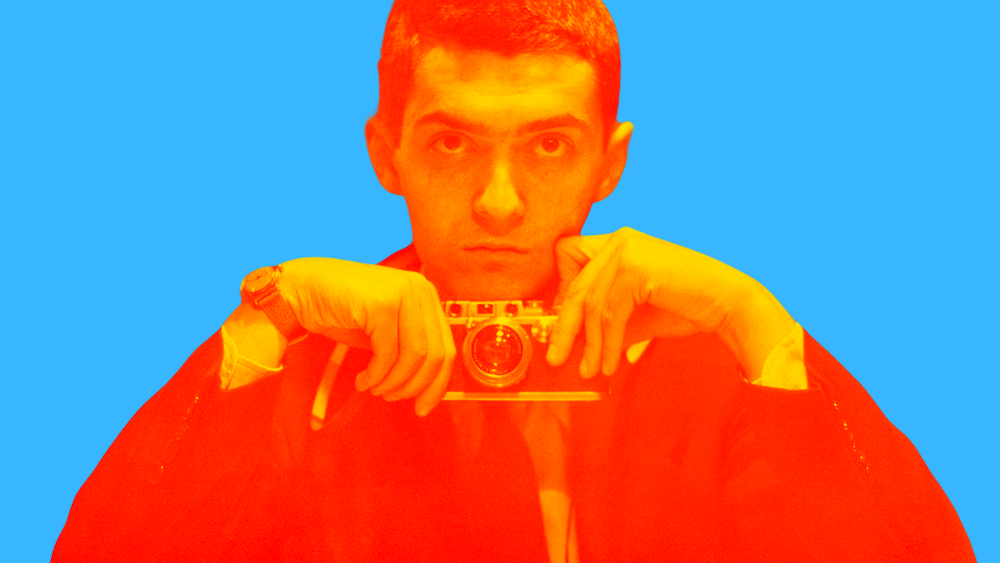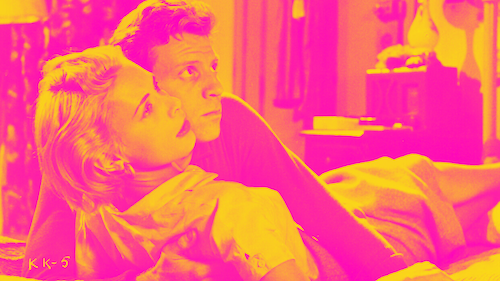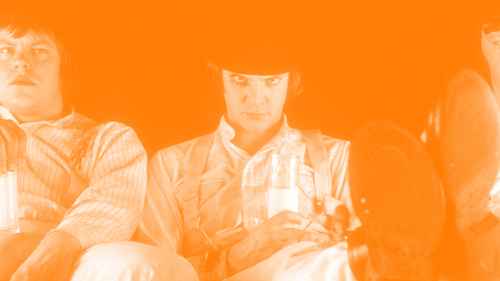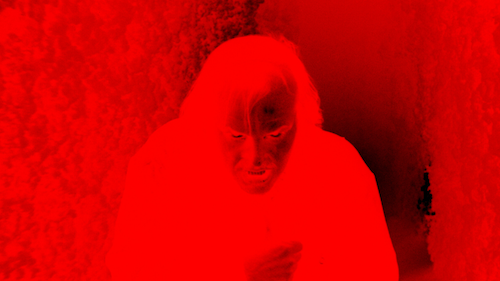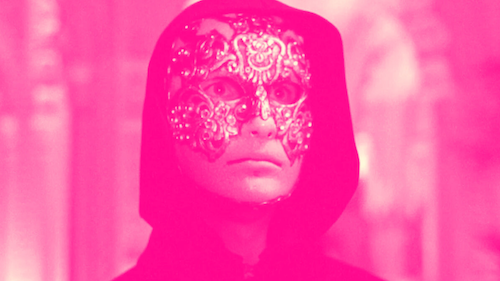Filmography Worship: Ranking Every Stanley Kubrick Film
Written by Andreas Babiolakis
Filmography Worship is a series where we review every single feature of filmmakers who have made our Wall of Directors (and other greats)
What hasn’t already been said about Stanley Kubrick? Undeniably one of the greatest directors of all time, the auteur legend has left his mark tenfold on the film industry. It goes without saying that most of his films weren’t as beloved upon their releases as they would be decades later, perhaps because he was always twelve steps ahead of other directors, cinephiles, and the film industry as a whole. After all, his biggest past time was playing chess: a tradition he brought to almost every single one of his sets as his form of downtime in between shots. In fact, his best films operate at the same meditative, calculated pace as the iconic game, and, just as he was with chess, he was always far ahead of his audiences who could likely not predict how his masterpieces would unfurl, be they resolved via nuclear explosion, a duel of guns until satisfaction is reached, or a psychedelic trip through time and space en route to Jupiter.
If chess shaped how he told stories, then his other passion — photography (he was a professional attached to Look magazine in his early years — sculpted his aesthetic eye. The director with the most consistently gorgeous films, Kubrick’s works have lingering shots, powerful focal points, endless depths of field, and striking uses of colour and lighting; Kubrick and his collaborators would even go on to invent new forms of cinematic technology in order to achieve what he wanted to pull off, including the super-fast lenses used in Barry Lyndon for the candlelit scenes in the dark. Of course — and this isn’t exactly news — Kubrick was a perfectionist who knew what he wanted and how to go about getting his results, oftentimes at the detriment of his cast and crew. Like a photographer stalking his subject in the wild, Kubrick would try and try again to get the shots and tone he designed in his head, even if it took over one hundred takes or a year of production (both happened with Kubrick). This dedication is indicative of the process of reading a novel, which is far longer than watching most films. Kubrick was also a bookworm, and the vast majority of his films are actually adaptations of novels (he didn’t shy away from controversial or seemingly unfilmable works either).
The end results would be uncanny, dreamy, atypical sequences that feel sent to us via satellite from another galaxy, even if the subject matter isn’t science fiction in tone. It’s the kind of signature style that Kubrick needed a few years and projects in order to find, and this has been a quest for countless filmmakers where many have failed to imitate what Kubrick pulled off. All of this patience meant that Kubrick was anything but prolific, releasing only five films in the last three decades of his life (with his final film, Eyes Wide Shut, being his sole release of the nineties towards the tail end of the era). Nonetheless, he dominated every genre he attempted in his prime, from social satires and New Hollywood counterculture statements to costume dramas and horror. Then there is the anti-war film, which Kubrick attempted multiple times to varying results (with his best example being one of the top war films ever made). I’m excited to get started with covering all of Kubrick’s films, as he is my second favourite director ever next to Ingmar Bergman. I will be including every single Kubrick film, even those documentary shorts that most don’t even consider (although I’ll be omitting World Assembly of Youth since Kubrick’s involvement is disputed and uncertain). With all of this in mind, it’s obviously challenging to place the films of Kubrick’s prime in a set order, and my thoughts may change on any given day. Here are the films of Stanley Kubrick ranked from worst to best.
16. The Seafarers
Kubrick’s worst film is also the least like his iconic style. A project in cooperation with the Seafarers International Union and the magazine The Seafarers Log, the appropriately titled The Seafarers is a half-hour promotional documentary about the benefits of being a part of the aforementioned union. That’s it. Outside of Kubrick’s practice with colour film (this was his first colour film) and cinematography (including the long take in the cafeteria sequence, and the various notable examples of colour and lighting being experimented with), The Seafarers is not only duller than it appears on paper: it’s painfully so detached from everything we know about Kubrick that it’s barely worth seeing even if you are a diehard fan. The only attraction here is that The Seafarers was presumed to be lost for four decades, and so at least we have the opportunity to watch this should we choose to. I’d argue that this feels a bit like Kubrick’s Look photographs having come to life, but you may be even better off looking at these magazine stills as opposed to watching this half-hour commercial.
15. Flying Padre
Almost as pointless is Kubrick’s earlier documentary short, Flying Padre: the capturing of Reverend Fred Stadtmueller and his need to use light aircraft to get from one end of his massive parish to the other. While a more interesting topic than The Seafarers and a project that Kubrick had more say and control in, the end result is a measly nine minutes (yes, not even a full ten minutes), which seems insanely short for a documentary film (what can you really get out of this film?). At least this feels a bit more like Kubrick’s fifties feature films, which still isn’t quite what most fans of the director would want to hear, but if you absolutely must, Flying Padre is harmlessly brief and has a few interesting visual elements that will make this blink-and-you-miss-it documentary worthwhile to some minute degree.
14. Fear and Desire
This might seem like a hostile thing to do, but I have placed Kubrick’s feature film debut, Fear and Desire, lower than one of his documentary short films. Why? Because it deserves it. Fear and Desire does have something going for it: its myriad of aesthetic experiments where Kubrick was clearly trying to toss everything at the wall and see what would stick (I don’t suppose he had much artistic control over something like, say, The Seafarers). Not every choice works, but enough do where — in typical Kubrick fashion — it’s tough to imagine that sequences of this film were shot when they were because they are so high quality in visual style. The bad news is Fear and Desire is a tonal and narrative mess that tries to cover the worst of humanity in this anti-war setting, and Kubrick clearly didn’t know how to tell a story (or what to say, even). It’s not the worst film ever, but this is easily Kubrick’s worst narrative motion picture. Having said that, take Fear and Desire with a grain of salt if you want to watch every Kubrick film ever, and you may find at least some artistic worth like I did. Just try to ignore how hokey and flimsy it can get.
13. Day of the Fight
The last of the documentary shorts Kubrick made early in his career, Day of the Fight is actually Kubrick’s first film of any kind ever. This documentary was based on a photo Kubrick took for Look magazine of professional boxer Walter Cartier. As Day of the Fight builds up to a boxing match via the quick detailing of the history of boxing and Cartier’s career (as well as the daily routine of the fighter), it feels like everything builds up towards this moment. It’s not exactly a thrilling film, but there’s purpose and meaning that make this story feel meaningful. The biggest setback is that this film is only twelve minutes long, but Kubrick achieves quite a bit in this runtime. Don’t misunderstand me into thinking that this is secretly some brilliant film, but Day of the Fight is actually kind of solid for what it is. You can also find early traces of Kubrick’s artistry here, which makes watching this film even better for the director’s biggest fans.
12. Killer’s Kiss
I feel like Killer’s Kiss is unfairly tethered to Fear and Desire since they’re the two low-budget feature films that Kubrick denounced. Sure, Killer’s Kiss is still far from his best work, but I’d argue that this crime flick is at least competent and has quite a few strong directorial choices going for it (a pivotal sequence amidst a storage space of mannequins is a particularly striking early image in Kubrick’s career). Perhaps inspired by the documentary work he shot for Day of the Fight while striving for his signature artistic vision, Kubrick takes the concept of what goes on in a prize fighter’s mind and distorts it with psychological tension and confusion. Killer’s Kiss is decent (and, frankly, mediocre at times), so it won’t be topping anyone’s lists any time soon, but it feels like a strong lead up to the breakthrough noir film The Killing, so any fans of the latter should at least give this early film a shot. You’ll find it’s not so bad, but it’ll never come close to the best works of Kubrick’s career (then again, most films ever made won’t).
11. Lolita
We’re now taking a big leap in quality and are starting to cover the films of Kubrick’s prime. Having said that, I think Lolita is easily his weakest key work, despite how much I do like the film. I adore the works of Vladimir Nabokov including Lolita, and the Russian author actually handled the screenplay here. However, I feel like something gets lost between the unreliable narrations and perversions of the source material and this Kubrick film, which feels far more like an observation than the mind of a psychopath in comparison. Nonetheless, I applaud an attempt to even try to adapt such a taboo story (most directors would either avoid this like the plague or would try too hard to be edgy with this adaptation). Perhaps Kubrick — who would be even more daring later on in his career — adapted this film too early; back when the Hayes Code’s final years would control this film enough so that it couldn’t get quite to where it needs to go. Finally, the film starting off with a “present” shot that flashes back is not the wisest decision in this case, and I personally find it one of the more jarring choices from a director who usually can do no wrong. Still, Lolita has enough complexity and nuance to matter at least quite a little bit.
10. Full Metal Jacket
I love both halves of Kubrick’s final war film, Full Metal Jacket. The problem is that I love them separately. Together, the film’s two parts feel so drastically different that it’s difficult to see how they are meant to blend together, outside of the setting of the Vietnam War and the characters we follow. The first half is dedicated to the horrors of boot camp training and the trauma it delivers, resulting in a striking eruption of relieved tension and despair. The film then cuts to some time afterward in the thick of it (also there’s the subplot of the Stars and Stripes newspaper and the capturing and tampering of the depictions of war). I get that the point of the film is to relay how wrong war films usually are about the experience of war, typically because of romanticization and patriotism, but it’s impossible to not feel like Full Metal Jacket is two separate parts of an anthology being forced into one container. Complaints aside, both halves are quite effective, especially the first part which many consider to be one of the best things Kubrick ever directed (it’s hard to deny that, given how harrowing and captivating it is).
9. Spartacus
Spartacus is a terrific swords-and-sandals epic that towers at over three hours in length; this is where the list starts feeling relatively untouchable. Having said that — and I’m certainly not deducting points for this — Spartacus feels the least Kubrick of all of his masterworks. This is thanks to the conflicts between the director, producer Edward Lewis and star Kirk Douglas, and screenwriter Dalton Trumbo; with all of the shifting voices and decisions, it’s clear that Kubrick didn’t have complete control or final say on this film which feels like a terrific — yet standard — historical titan of a film. Outside of some fascinating shots (I’ll never forget how much the gladiator training sequence stands out artistically), this is as Hollywood as Kubrick would ever get. There’s still much to unpack narratively here regarding fate, the ripple effects of decision-making, and the scale of near-mythological figures. I think Spartacus gets flack because of how unlike Kubrick’s usual works it is, but I believe it holds up really well in its own way (even if it is a bit of a mutt). All things considered, this was the last time Kubrick played ball with the Hollywood system, and it’s easy to see where his frustration came from.
8. A Clockwork Orange
Anthony Burgess’ A Clockwork Orange is a formative novel in my life, so you can imagine how important Kubrick’s film was to teen me (I wrote my review from a couple of years ago entirely in Nadsat, for crying out loud, and I dressed up as Alex DeLarge for Halloween in high school). Now, in hindsight, my score of four out of five may seem a teensy bit low, and that’s because I couldn’t shake off the lopping-off of the epilogue (of sorts) from the novel that ties up the themes of morality and brainwashing and how impossible of an order it is to try and make an entire civilization obedient; in Kubrick’s film, we kind of just accept that one’s return to immorality is where the story ends. I’m softening up to the film a bit again mainly because of how bold it is for its time (hell, even now); I’ll always prefer the source material, but that doesn’t mean that I have to be harsh on what Kubrick made. His take on the fight between free speech and reign versus the policing of all things in. a world riddled with sickness is still an important part of the conversation. Maybe I’m just getting more ill the older I get. It’s safe to say I was cured, all right.
7. The Shining
Stephen King has tried to distance himself from Kubrick’s adaptation of The Shining, and it’s easy to see why when the former’s novel is about a family man slowly losing sight of his role (as a father and husband) at the hand of addiction. Kubrick’s answer is far more cryptic, refusing to have answers to everything (if anything, Jack Torrence seems jaded and unusual even before he accepts the caretaker role at the Overlook Hotel). What I will say is that The Shining remains one of the authentically scary horror films ever made, with everything from obvious signs of shock (twin girl ghosts recounting how they’ve been butchered) to the inexplicable (that random man and the individual in a bear costume comes out of nowhere, and yet it adds to the madness of the film). Is there merit to the film outside of its spooks? Absolutely. While it isn’t as sympathetic as King’s novel, Kubrick’s version is an engrossing take on the banality of everyday life within the confinements of the allegorical use of cabin fever: a dismantling of the American family portrait via the soulless husks of all of its members being forced to endure one another to the bitter end. Considering this is the lone straight-up horror film in Kubrick’s career (he for sure included elements of horror in some of his other films when he saw fit), he nailed the genre in one try.
6. The Killing
It took only two weaker Hollywood films for Kubrick to figure out how to not only make a great motion picture, but one that would already seem ahead of the pack. At the tail end of the classic noir movement came The Killing: a labyrinthian take on the tropes of villainy, mysteriousness, downward spirals and comeuppance. The majority of the film is dedicated to this one heist being planned and executed, and you feel every ounce of the exhilaration present, as you wonder if all of this brainstorming will result in a scheme that will fully work (the dark shadows from early on are a harbinger that things likely won’t go smoothly). While Kubrick’s films usually take their time and allow you to soak up what you are seeing, The Killing gets straight to the point and is an unusually brisk film for the auteur (this proves that he could have been full-throttle whenever he felt like it). The Killing is no longer being slept on as it has reached cult status, and rightfully so: this is a tremendous film noir that bid the movement farewell while it was dissipating (it would be the last time Kubrick would look backwards instead of ahead when constructing his films).
5. Eyes Wide Shut
If you ever want to know what the Kubrick effect feels like (where a film is shrugged off upon its release, only to be heralded as a masterpiece years later), then look no further than Eyes Wide Shut: Kubrick’s swan song, which was released around the start of Rotten Tomatoes (I go into the problem with how sourly the site’s aggregate style ages over time here). You cannot escape the mediocre reviews this erotic psychological drama/Christmas film (yes) received upon its release in the same way that many cannot deny that this film simply is incredible. It is dreary yet dreamy, dismal yet colourful, eerie yet soothing. It is every bit as uneasy and euphoric as sex, religion, and the unknown can be, as you feel hypnotized by the allure of Eyes Wide Shut but also terrified by what you allowed yourself to be vulnerable to. It feels impossible to separate this final masterwork from Kubrick’s career because of how integral to his signature voice and relentlessness it is. This film is purely aesthetic and mental delirium, and you’ll find many pale imitators — as you will for most of Kubrick’s best films — in its shadow.
4. Dr. Strangelove or: How I Learned to Stop Worrying and Love the Bomb
Kubrick’s lone comedy film stemmed from the director realizing how ridiculous his adaptation of Peter George’s Red Alert was shaping out to be. He decided to turn his next drama into a fully-fledged satire, and perhaps one of the best of the genre of all time at that. As we laugh at the idiocies present during this military call-to-action (to stave off an erroneous order to deploy hydrogen bombs in the USSR), we leave the film realizing that these are the buffoons that are in charge of our lives. At any moment, some ego-driven imbecile can hit the button and end everything over a territorial-pissing contest. Kubrick’s Dr. Strangelove may draw many laughs, but it never shies away from the severity of what is actually going on (this is what makes the film so special: some of our laughs stem from the anxiety we feel, knowing this could very well happen to us in real life). No one comes out of this film looking truly capable (outside of maybe Officer Lionel Mandrake, who scrambles to try and fix the decisions of all those around him). The guns-blazing approach Kubrick adopts in Dr. Strangelove only grows better with time as our sense of humour gets darker and darker; he knew future viewers could take the jokes and warnings he delivers here. Dr. Strangelove is easily one of the cleverest films you’ll ever find, be it via its political comedy that doesn’t hold back or its cautionary elements about where the world is heading.
3. Paths of Glory
Sandwiched in between Kubrick’s two best Hollywood-esque films (The Killing and Spartacus) is the artsier Paths of Glory: easily his greatest war film (unless you want to consider Dr. Strangelove a part of that conversation; they’re neck-and-neck, as far as I’m concerned). This film also doubles as one of the great legal thrillers of all time, considering how much of the film is devoted to the court-martial trial that is meant to sentence those who refused a suicide mission to their deaths. There are glimpses of the iconic style of Kubrick all over this film, particularly inside the courtroom (some of the best shot sequences of his career can be found here), but Paths of Glory is so much more than just a prophetic look at the director’s evolution. Its punishing take on military law and fatality cannot be ignored, even with the beautiful ending (a bit cheesy by Kubrick’s standards, but I’m a sucker for how emotional it gets me every time). This anti-war parable remains effective, harrowing, exquisite, and devastating. I cannot think of many films that capture the hypocrisies of war quite as well as Paths of Glory.
2. 2001: A Space Odyssey
Nobody wants to bring up this angle, but 2001: A Space Odyssey is very much a warning about where humanity is heading as Dr. Strangelove or A Clockwork Orange. We start off with the Dawn of Man: hominins figuring out ways to survive when one discovers the very first weapon to be used for hunting (and for immoral violence). We flash to 2001: the then-future depiction of where the human race could have been (to be fair, we’re not exactly living in space even now, but the film predates many technologies found within it like, say, tablet devices and AI). Humanity’s quest to keep discovering and inventing continues to lead to the detriment of others and ourselves. Of course, trying to find too much meaning in 2001: A Space Odyssey is to ignore the latter portion of its title when you are meant to be whisked away by the hallucinogenic trip of the film; if we have no control over our fates, then we may as well enjoy the final ride. The Star Gate sequence whilst heading to Jupiter remains one of the most breathtaking moments in all of film, and it resides in 2001: A Space Odyssey: one of cinema’s greatest achievements (and, quite possibly, the top science fiction film). It is both gorgeous and mysterious, glorious and eerie, transcendent and damning. Kubrick knew that the only way to venture into the unknown was with both feet, the good and the bad. Decades later, we’re still deciding what this film is precisely saying which only adds to its mythological scale.
1. Barry Lyndon
Picking just one Stanley Kubrick film to sit at the top of his filmography felt nearly impossible (I’d argue that the top five I have presented are interchangeable at almost any time). However, more often than not, I keep coming back to the period piece opus Barry Lyndon when I think about my favourite Kubrick films. Easily one of the most beautiful films I have ever laid my eyes on, this passive take on corruption and power forces you to feel everything that you see (as opposed to analyzing it like you are a part of the game). Every single shot will look like a painting when you pause the film. Each sequence is mesmerizing, catching you off guard when something striking happens (I never felt prepared for that early chalice-to-the-face incident). As we follow Redmond Barry’s rise and fall, we never lose sight of what appears to be a helpless child in an adult’s body (it is then that we realize that, oftentimes, those in power have no idea what they are doing for the betterment of society, but they only know how to try to serve themselves).
Barry Lyndon is also Kubrick’s most emotional film, I find, as I catch myself crying multiple times throughout this three-hour affair (either via the exquisiteness of the artistry here, or the depressing turns the film takes). It may feel antithetical to select the prettiest film by a controversial director as his best, but Barry Lyndon may be my favourite costume drama I’ve ever seen (once again, Kubrick delivers on a genre he would otherwise not be associated with in any way). When asked, I place Barry Lyndon in my top ten favourite films ever, so it only makes sense that it has to be what I consider Stanley Kubrick’s greatest film by default (even though picking just one title hurts so much).
Andreas Babiolakis has a Masters degree in Film and Photography Preservation and Collections Management from Ryerson University, as well as a Bachelors degree in Cinema Studies from York University. His favourite times of year are the Criterion Collection flash sales and the annual Toronto International Film Festival.

